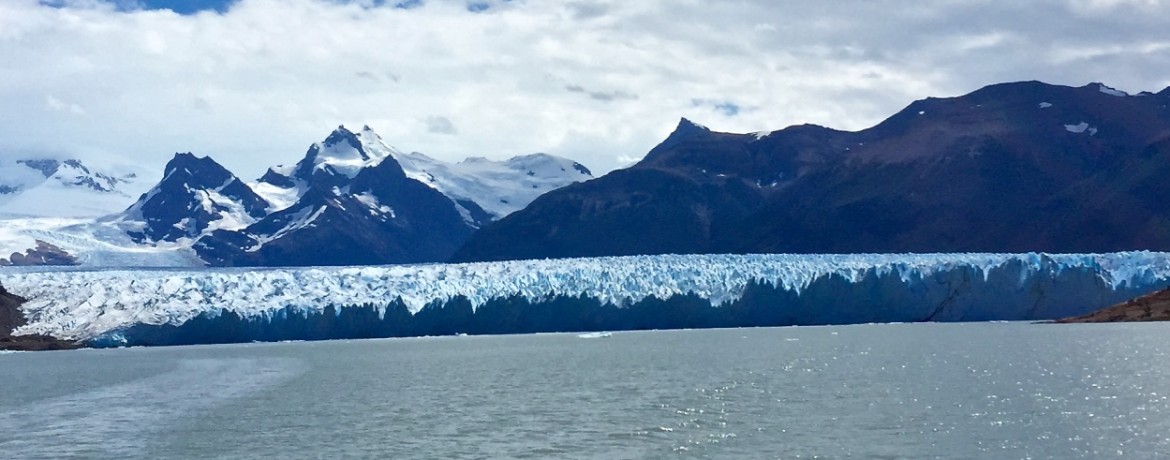This is the story of how we became the first tourists in history to visit Peru and NOT see Machu Picchu.
Machu Picchu is the highlight of many trips to South America. An icon of the Incan civilization, it’s a UNESCO World Heritage Site and a wonder of the world. Months before we left, Mary and I booked a five-day, four-night trek through the mountains of Peru to visit the ruins, which we intended to be the capstone of our ten weeks in South America. But Pachamama had other plans for us.
(This story is longer and more detailed than otherwise necessary, in the hopes that it will be useful to people who find themselves in a similar situation.)
The house across the street from our hostel in Arequipa, Peru had a dog…kind of. We initially assumed it was a stray, since it was always in the street in front of the house, but it was there every day, and cleaner and healthier-looking than most stray dogs. Eventually we learned that it belonged to the family living across the street, but they just kept it outside all the time and let it roam around the neighborhood. However, this slightly stray dog was super friendly, and since other people from our hostel were doing it, we felt comfortable going against common sense and casually patting him as we walked past him. What could go wrong? For the first couple days, nothing did.
Two nights before we were supposed to leave Arequipa for Machu Picchu, we walked out of our hostel to dinner and the dog across the street ran up to us, as usual, and we patted him, as usual. Only this time he started jumping on us, in a way that was probably playful, but also kind of aggressive. This dog was about 20 pounds, so I wasn’t really worried from a safety perspective, but it was clear he was not just going to let us walk to dinner. So I tried to push him away, and he grabbed onto my arm (through my shirt and jacket). As I was trying to shake him off, my hand grazed his teeth, and we eventually retreated back to the hostel. I washed my hands to get any dog slobber off before we left again for dinner, this time with one of the hostel employees shooing away the dog.

At dinner, Mary was a little distracted (to put it lightly) by the possibility that I’d been exposed to rabies. I wasn’t really that concerned. Sure, the dog had slightly bit me, but there was no blood, teeth marks, or broken skin. Also, the dog didn’t seem like it had rabies. It was fine before this incident, and since we’d been petting the dog before it bit me, this wouldn’t even be considered an unprovoked attack. After thinking things over during dinner, I decided there was nothing to worry about.
When we got back to our hostel (after staring down the dog, which had gone back to acting normally), we consulted the people’s doctor, Google, and I began to worry a little bit. It turns out rabies is nearly always fatal by the time you start showing symptoms, and you’re generally supposed to get the first rabies shot within a day or two of exposure. We couldn’t just put this off until I felt sick, or until we got to Australia. On the other hand, rabies post-exposure protocol called for five vaccines over the next three weeks, which would mean foregoing Machu Picchu. Additionally, it turns out that some places in Peru used an older form of the vaccine (instead of the newer one recommended by the WHO and CDC) that had a higher chance of side effects and had to be injected into your stomach, instead of your arm. In other words, there were some legitimate consequences to getting the vaccine. It’s nice to play it safe, but given the seemingly low chance that I was actually exposed to rabies, at what point were we just being irrational? After a sleepless night weighing Machu Picchu against what was essentially a 0.1% chance of dying, we decided to see a doctor to figure out our next move. We went to Clinica Arequipa, as recommended by the International Association for Medical Assistance to Travellers.
Clinica Arequipa looked more modern than many American medical facilities, which immediately put us at ease. After struggling to explain our situation in Spanish to the receptionist, we eventually saw a doctor, who listened to our story and inspected my hands for bite marks. Finding nothing, he told us there was no need for a vaccine, as there was no apparent broken skin and the dog’s behavior didn’t sound indicative of rabies. (For what it’s worth, he also seemed competent, to my untrained eye, and didn’t charge us anything, which was nice of him.) We left Clinica Arequipa feeling better, but still a little uneasy. All signs pointed to a vaccine being unnecessary. A doctor had even told us so. But it seemed like a lot was riding on the idea that there was no broken skin, and it was obvious this wasn’t something we were just going to stop thinking about in a few days if I didn’t get the vaccine.
After a few more hours of deliberation, we decided to get the vaccine for piece of mind. It was almost certainly being overly cautious, but rabies can take months or even years to develop, and I didn’t want this to weigh on us for the rest of our trip, even though it would cost us Machu Picchu. Some research online revealed that Arequipa’s anti-rabies center was located in Hospital Goyeneche, a short taxi ride away from our hostel, so we headed there to ask for the vaccine.
Clinical Arequipa looked new, clean and modern, but Hospital Goyeneche is over 100 years old and looks its age. The faded signs and run-down buildings would have been charming in other circumstances, but did not inspire confidence given that we were seeking medical services in a foreign country. However, the doctor we eventually talked to, once we made our way through the grounds of the hospital to the anti-rabies center, made up for the aging facilities with his apparent competence, as well as his reassuring manner and patience as we peppered him with questions in our slow, stuttering Spanish. He agreed after examining me that the vaccines seemed unnecessary, but said it was fine if I wanted to get the vaccines for peace of mind. He also recommended we observe the dog for 10 days to determine if it actually had rabies – basically, if it did, it would be sick or dead within 10 days, since rabies affects animals more rapidly than humans. If the dog was fine after 10 days, we could stop the injections. That sounded reasonable to us, and after getting the first vaccine of the five I’d be getting over the next three weeks, we left the hospital just in time to taxi over to our chocolate-making class at Chaqchao, which I highly recommend. (Fortunately, it turned out that Hospital Goyeneche uses the modern cell-culture vaccines recommended by the WHO and the CDC, and rabies vaccines are free in Peru. The version I got was called VeroRab, but it has different names in different countries. My side effects were limited to headaches and lethargy the day of and after each vaccine, but your experience may vary.)

To make a long story short, I got the second and third vaccines on the third and seventh days after the first vaccine, as scheduled, and the dog was still alive and acting normally ten days after the bite, so the next two vaccines were unnecessary. However, after consulting our travel doctor back in Arlington, we learned that if I got an additional vaccine on the 21st day after my first vaccine, that would suffice for the pre-exposure vaccination. Accordingly, we got that done in Australia with relatively no issue, although they were a little confused by the Spanish vaccine card from Peru. Of course, even with the pre-exposure vaccine regimen done, I’d still need two more boosters after any future bites, so I’m not going around petting street dogs anymore.
So that’s how we ended up going to Peru and missing Machu Picchu. Was it the right decision? It was for us, but not necessarily everybody. It’s easy to say you should play it safe all the time, but even going outside carries some risk. We were being pretty risk-averse, given the low chance of rabies exposure and the fact that two doctors told us the vaccines were unnecessary. But Mary and I are fairly risk-averse people, and we figured we wouldn’t be able to push this out of our minds unless we handled it. Of course, I’m not a doctor. Mary’s not a doctor. This blog post should not be considered medical advice. Consult a doctor before doing anything, and above all, don’t sue us.





10 Comments
Vikram, this is a tale worthy of P. G. Woodhouse. Write more please.
We should just stick to Kavi!
So sorry you missed Machu Picchu. It was well worth the trip there and the climb. You should really plan to visit it some day. If you do, I have a wonderful Incan guide to recommend. I will be posting a “trip report” on FB soon with more details. Enjoy Australia. How long will you be there?
We’re sorry we missed it too, and you! Glad that your trip went well. We were in Australia for three weeks, and now we’re already in the Philippines — we’re a few countries behind on the blog!
I would have played it safe, too!
You are a careful and concerned person. Good for you. Buy a book about Machu Picchu and put it on your coffee table, so that when I visit, we’ll browse.
You can always go back to Machu. Can’t alway go back to unpet a maybe rabid dog.
We hope so! (about going back to Machu Picchu)
So glad all is well. You did the right thing. Be safe,, keeping you in prayer during your
journey.
Thanks for thinking of us!